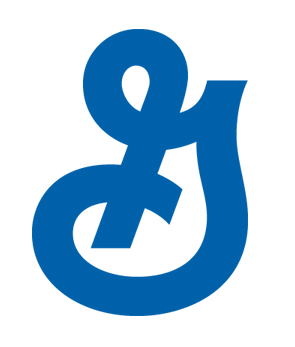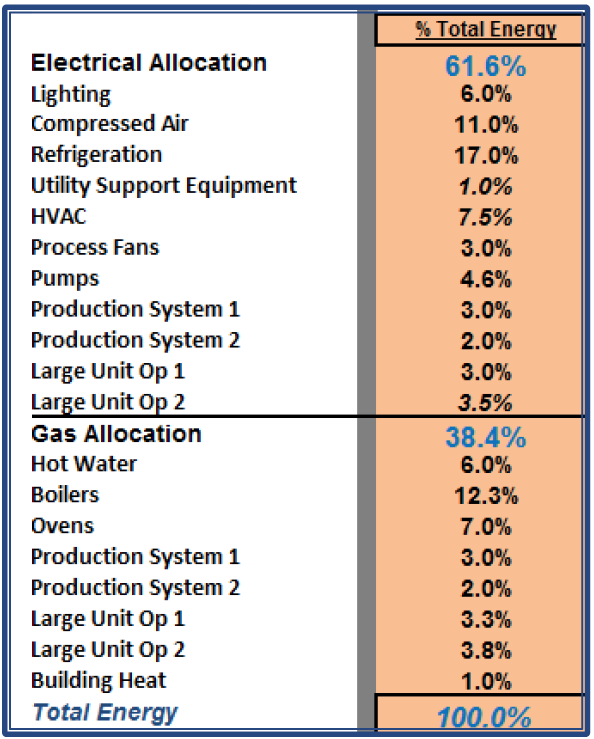By Blower & Vacuum Best Practices Magazine
03/16/2016
If you ever stepped foot in a grocery store, you are probably familiar with General Mills. With brands like Cheerios, Wheaties, Pillsbury, Nature Valley and Green Giant, General Mills products can be found in just about any household, culminating in net sales of $17.6 billion in Fiscal 2015.
To put this in perspective, on any given day General Mills will provide:
- 60 million servings of whole grain cereal
- 27 million servings of Yoplait dairy products
- 12 million Nature Valley bars
- 5 million Pillsbury cookies (1)
What you may not be familiar with, however, are the progressive sustainability efforts at General Mills. At the World Energy Engineering Conference (WEEC 2015), Graham Thorsteinson, C.E.M., C.E.A., Energy Platform Leader at General Mills, discussed the company’s energy management program. Influenced by ISO 50001 and the Environmental Protection Agency’s (EPA) ENERGY STAR program, General Mills’ energy management system measures “energy as an ingredient,” treating energy waste in the same way as wasted raw material—with zero tolerance.
The company also participates in the U.S. Department of Energy’s (DOE) Better Plants program to help drive its energy management goals. At the end of Fiscal 2015, the energy management program, which has implemented more than 1,000 energy projects, has resulted in the following achievements:
- $13.5 million in annual energy savings
- 11 percent energy intensity (BTU/pound) reduction
- Reduction of 100,000 metric tons of CO2
- Multiple energy engineers recognized as Association of Energy Engineers International Young Energy Professional of the Year, along with five regional awards (3)
|
|
 |
 |
Sustainability efforts at General Mills have been recognized by both the EPA’s ENERGY STAR program and the DOE’s Better Plants program. |
||
Within the “zero-loss” culture at General Mills, plant personnel identify and optimize major energy users in each facility. Common opportunities include: the optimization of dryers, ovens and freezers; compressed air optimization projects; improvements to building heating and cooling system; and lighting replacement innovations. In addition, engineers at General Mills have started to explore new energy-saving opportunities within the vacuum and blower systems at their production facilities. To better understand how any production system is addressed at General Mills, an examination of the company’s energy management methodology is required.
Zero-Loss Culture at General Mills
At General Mills, the energy reduction process has been integrated into the already-established production tracking system, which demands zero loss. As a result, energy is discussed in production meetings just like equipment stops and ingredient overuse. The production tracking system at General Mills is proprietary, and it required the combination of multiple external products to tie energy usage into the overall system. This is a unique aspect to the energy management program at General Mills, and helps provide context to the energy data. As Thorsteinson mentioned at WEEC 2015, “Energy data without the weather and production context is not actionable.”
Under the production tracking system, energy engineers at General Mills view the ultimate product as the combination of both raw material and the energy required for its transformation. Put simply:
Raw Material + Energy for Transformation = Useful Product
By taking that approach, they manage energy waste in the same way as raw material waste, and optimize their processes accordingly. If viewed from that perspective, energy usage can be monitored the same way raw material waste is managed.
Actual Energy Usage – Minimum Required for Product = Waste ($)
The equation above helps engineers at General Mills put energy waste in proper context. By applying best practices from the energy management program, they can then set aggressive targets for reduction.
Energy Management at General Mills
The energy management program at General Mills is an internal, continuous improvement initiative. It involves metering energy use, analyzing that data, and correlating energy use to the final product (i.e. cereal, granola bars, etc.) in the form of BTUs/pound. The overall energy reduction process has five steps:
1. Establish Energy Program: At the onset of implementing energy management for a given plant, dedicated personnel are designated at the site to lead the program. Specifically, each plant commits an engineer as an Energy Lead, who begins the process by developing an energy metering strategy (Figure 1). This involves the installation of meters to capture detailed energy usage data.

Figure 1: Gas System Metering Strategy - Click here to enlarge
As energy is invisible, losses can go unnoticed for extended periods of time—making energy metering a vital aspect of the energy management program at General Mills. The company’s plant in Covington, Georgia, for instance, has installed more than 150 energy meters on key pieces of equipment. The meters provide real-time energy consumption data, and help plant personnel to understand the impact of system changes.
|
Figure 2: Electrical/Gas Allocation Chart |
2. Conduct Energy Analysis (Site Energy Allocation): Energy team members perform an energy balance assessment at the site to determine how energy is used and in what amounts. The analysis provides a breakdown of specific systems (i.e. lighting, compressed air, pumps, etc.), displaying what percentage of total energy each one consumes.
3. Identify Energy Losses: The next step involves creating program-wide “energy loss tools” to identify energy losses, develop targeted solutions, and calculate potential energy savings. As an example, an energy loss tool might provide a list of best practices for a specific utility. For a boiler, the energy loss tool could include the following energy troubleshooting guide:
- Does the boiler have an economizer to recover heat from exhaust gases to pre-heat feed water?
- Do boilers operate at optimum oxygen levels?
- Can boiler blow-down percentage be improved with an RO or water chemistry improvements?
- Does the boiler have a blow-down system without automatic conductivity control?
Other loss tools, or methods to improve energy use by optimizing operations, include:
- Maintenance
- Proper Operation
- Controls
- New Technologies
- New Innovations to be spread to other plants
A significant aspect to this stage is setting aggressive reduction targets, with the goal to sustain performance and immediately eliminate losses above targeted consumption levels. As General Mills participates in the DOE’s Better Plants program, the company adopted the program goal of reducing company-wide energy use by 20 percent over 10 years.
4. Execute Improvement Plan and Proven Solutions: To achieve the aggressive goals, energy engineers create a 3-year plan, including energy-reduction projects to implement at each site based on the analysis performed. Best practices established through loss tools are also implemented by plant personnel to reduce energy intensity. Other projects may include lighting retrofits, air compressor upgrades, and optimizing refrigeration compressors.
5. Validate and Sustain Results: The final step to energy management at General Mills is ongoing: Metering and analysis tools are used to continually assess performance improvements and ensure gains are maintained. The company tracks energy intensity and cost savings, comparing those values against the baseline developed in Fiscal 2012. The energy management system accounts for both weather and production contexts, allowing for real energy metering values.
As shown in Figure 3, the energy management system allows engineers to view data from more than 200 energy meters—all from one plant across four production systems. With just a glance, plant engineer can see the energy consumption of a specific system, including specific metrics for each process, and the efficiency of the utilities involved.

Figure 3: Shiftly Energy Management Summary - Click here to enlarge
Real-Time Energy Management to Eliminate Waste
With real-time energy management in place, energy losses can be accounted for in real time, and prioritized at shiftly production meetings to prevent losses. Operations personnel can then be assigned to any issues, and provided with an energy troubleshooting guide for any given unit. This practice frees up energy engineers to focus on new areas of opportunity—such as vacuum and blower systems.
As part of the production tracking system, energy management at General Mills has been incredibly successful. The unique perspective of viewing “energy as an ingredient” helps keep an invisible cost like electricity from running rampant. At the beginning of each day, you can snack safely—knowing your cereal was made sustainably at General Mills.
For more information, visit www.generalmills.com.
To read more about Corporate Sustainability Programs, please visit www.blowervacuumbestpractices.com/energy-manager.





